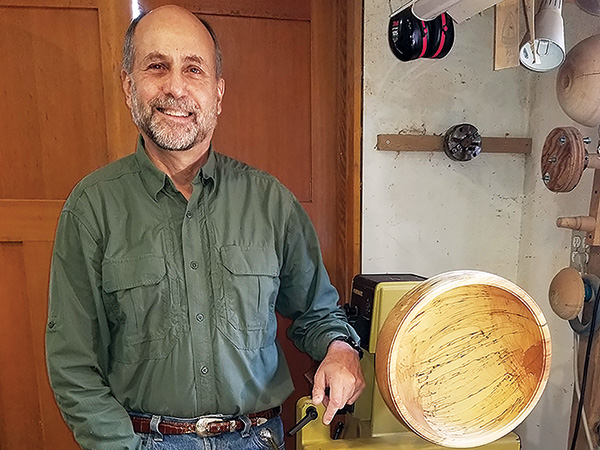
My name is Rick and I am a woodturner. I frequently go into my shop in the morning and don’t emerge until dinnertime, covered in wood shavings. Whenever I hear a chainsaw in the neighborhood, I get in my truck and drive towards the sound in the hopes of scoring some freshly-cut wood. I am a woodturner!
I didn’t start out wanting this kind of life. Once, I was just like everyone else. I did repair jobs around the house, built sheds and decks and knocked together bookshelves using big box store lumber — just another weekend warrior. Then I took a woodturning class and learned how to make things like pens and handles. If only I’d stopped there! But no, I had to take a class on bowl turning. And I was hooked.
Accidental Success
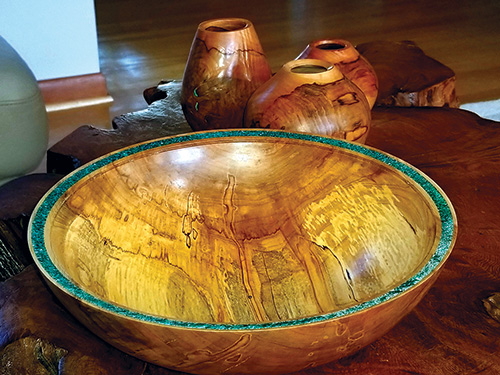
In the early “Wheee, I just turned a round thing” stage, I was very pleased if I wound up with something marginally usable. I rarely could make two things that looked the same. And I used a LOT of sandpaper — otherwise known as the “80-grit gouge” — to smooth over poor tool-handling technique. Success was purely accidental, and the results were at best “interesting.”
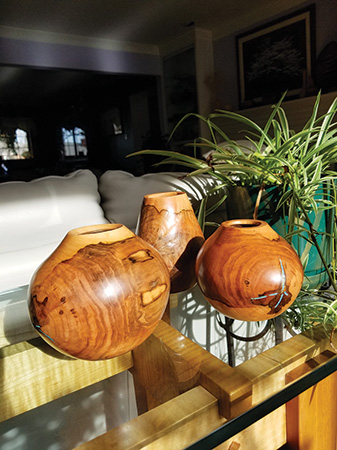
The next step in my evolution from accidental to intentional woodturner was focused on acquiring good toolhandling techniques. I call it the “YouTube” stage. My goal was to produce a turned surface that could be finished with minimal sanding. I watched a lot of videos and went through a lot of firewood. After 50 or so bowls, I had the whole technique thing down pat. And I could repeatedly produce similarly-shaped objects. But the silly bowls were still ugly. Oh well, from firewood to firewood…
Technique as Means to an End
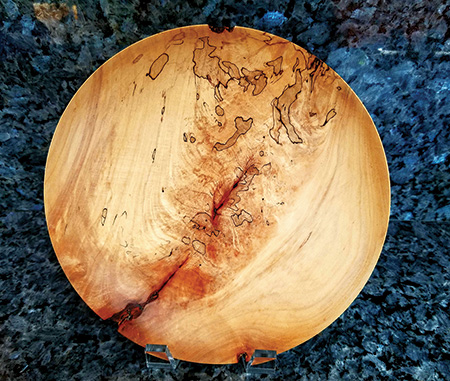
The third step was perhaps the most important in my development as a turner. I call it the “intentional design” stage. I thought about what I liked and what I didn’t in examples of other turners’ work — the proportions, rim detail, foot dimensions and overall shape. I read about the golden ratio. I looked at examples of color and patterning in raku pottery. I sketched out scale drawings of work I intended to produce and evaluated them in terms of both form and functionality. Technique became just the means to an end, and success was not accidental but intentional.
At the end of this intentional design stage, I was able to produce objects that I liked. Other people liked them too, so I was able to start selling my work. This pleased my wife to no end, because the house was getting a bit cluttered with bowls.
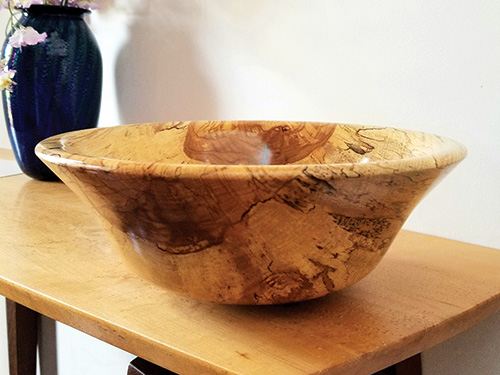
The fourth progression is what I call the “druid” stage. I work exclusively with locally- sourced green wood. Green wood gives you the opportunity to use the wood grain as an intentional design feature. Showcasing unusual feathered or fiddleback grain in a turned piece is done by choosing where to take wood from a tree. This requires looking past the surface of the tree to visualize what the grain looks like under the bark. I’ve also learned how to position the piece on the lathe to balance the grain of the finished piece.
See It, Do It, Teach It
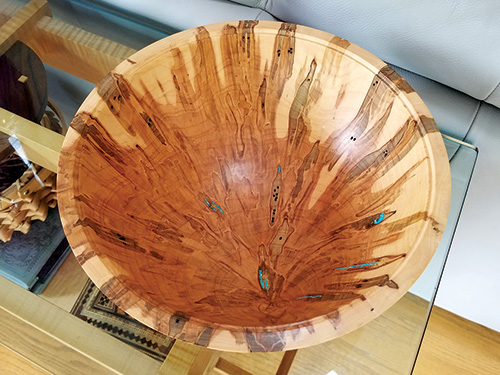
The fifth and final stage is the last stop on the “see it, do it, teach it” train ride. Learning how to convey muscle-memory skills and intuitive knowledge to new and emerging turners has been fun but also very challenging. It has forced me to examine what I’m doing, understand why I do it and find ways of sharing that knowledge with others who may have very different learning styles than me. And I practice what I preach with every woodturning class I now teach.





